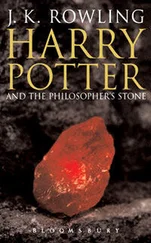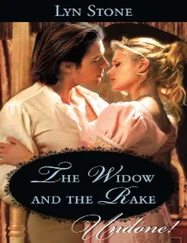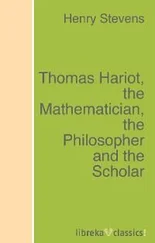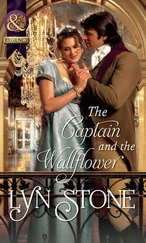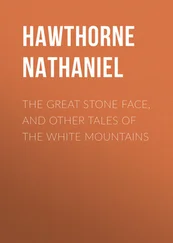But Marie was nominally enrolled in the College of Engineering and was taking the mandatory "Introduction to Engineering" course along with a course in “Physics for Engineers and Scientists.” Marie considered Helen’s question for a few moments before responding.
“It looked like he was taking exact measurements of the amount of material available to him. Maybe he has belatedly decided to get rid of the stump. But he probably could have estimated the weight or volume of the log he wanted to move without using the calipers. I’m thinking he might be contemplating a sculpture or some kind of a signpost.”
“Maybe a bust of Einstein, or a totem pole of famous Noble prizewinners in physics, ” Helen suggested. She laughed as the two continued toward the dormitory complex.
A week passed before Marie and Helen were again walking along Faculty Row. A lot had happened to the stump in Professor Wood’s front yard. He still had the calipers and the meter stick near him on scaffolding he had built around the trunk but was carefully at work with a chain saw. He had already produced a roughly conical shape along the whole height of the form. The top of the column had an interesting recurved shape that reminded Marie of a cap for a garden gnome, but an unusually tall one!
“So much for the idea of a bust of Einstein,” Marie teased her friend. “It looks more like he is at work sculpting one of the ‘cone-heads’ from Saturday Night Live than any physicist I have ever seen.”
“Let’s ask him which one!” Helen proposed with considerable glee.
Marie considered the possibility that she might have Professor Wood for one of her physics classes next year. “I don’t think that is such a hot idea,” she said.
“Oh, come on,” Helen insisted. “It can’t hurt to ask. He’ll probably be flattered that we even noticed the progress that he has made.”
Before Marie could offer further objections, Helen waved her arm in the direction of the sculptor and yelled out, “Hey, Professor! What’s happening?”
The professor turned with a quizzical look, lifted his safety goggles and peered over the top of his spectacles. “Do I know you?” he asked.
“No, my name is Helen Miller. I am a freshman in Liberal Arts at the university.” “Liberal Arts? How do you know me?”
The professor had stepped down from the scaffold, placed his tools carefully on the tarpaulin that he had spread out at the foot of the stump. He strolled cautiously in the direction of the students.
“William Wood,” he offered, extending a hand.
“My friend is in the College of Engineering.” Helen answered. “She recognized you from the new student orientation week.”
Helen shook the professor’s hand. “Marie Willert,” Marie said, somewhat sheepishly offering her own hand toward the professor.
“I am always pleased to meet members of the freshman class. I have not taught a freshman class for quite some time,” the professor said with a welcoming smile.
“We were wondering whose likeness you seem to be sculpting,” Helen continued.
“Oh, it is not that kind of a sculpture,” Professor Wood explained. “I call it United States of the Elements.”
Helen and Marie returned blank stares.
“Let me show you the screenshot of the model that I have made on my computer,” said the professor, briefly turning away from the students to pick up a computer printout that they had not previously noticed laying behind the stump ( Figure 1).
The screenshot of the model looked like a winding staircase and, had it been made of tool steel, might have served as a router bit except that it was only approximately symmetric. The teeth of the bit might have been used to shape an elaborate edge to a table top or some other baroque piece of furniture – but the teeth were not all of the same shape and size. Moreover, the teeth spiraled along the vertical axis rather than describing concentric circles.

Figure 1. Prototype of the United States of the Elements
Helen and Marie were still at a loss for words. “Did you also carve this model?” Helen wanted to know.
“No,” the professor explained. “I only produced this illustration on my desktop. But later I was able to use the same software with a machine called a three-dimensional printer that built up the solid structure from special plastic, one very thin layer upon the others. After that, I used the machine to produce a three-dimensional model made of titanium powder, again one layer upon the other. I can show you that model some other time.”
Marie wondered to herself what kind of a program might have been used to describe such a complex structure and what kind of programming language the professor might have used.
The professor continued, “The statue that I am trying to reproduce here will actually be a three-dimensional chart of the elements, but it will display more information than the usual two-dimensional variety.”
“Do you mean the usual two-dimensional chart of the elements that hangs in every chemistry lab?” Marie blurted out without thinking and then blushed with embarrassment.
“That very one,” the professor assured her with a comforting nod.
Helen broke the awkward moment of silence, “We certainly had not guessed anything like that!”
“I’m sure you hadn’t.” The professor continued to be supportive of the students’ curiosity. “Stop by my office in the Physics Building some day and I’ll explain more about it. My office hours are posted on the Faculty page of the university website.”
Professor Wood changed the subject. “Is there a specific ‘liberal art’ that has captured your interest, Helen?”
“I’m thinking about majoring in Philosophy,” she replied, relieved not to have been called upon to remember anything more about the chart of the elements than its dominating presence in her high-school chemistry class room.
Helen had taken an advanced chemistry course as a senior in high school, primarily with the goal of earning the college credit that would preclude her having to take a lab science once she actually got into an undergraduate college program. She had done well in the course and the university had indeed accepted her credits toward a degree in liberal arts. But Helen would be hard pressed to say that she had really enjoyed the experience. She had frequently found the concepts difficult to grasp and she had to rely more often than she would like to admit upon sheer memorization to get the score she wanted on a quiz or a test. The laboratory had been even more of a struggle for her. She was not particularly precise in her handling of physical objects and was prone to inadvertently contaminating her lab specimens.
“Philosophy! Perfect!” the professor exclaimed. “We have a lot to talk about.”
“Well, I certainly look forward that,” Helen said with a smile of false confidence, having no idea about where such a conversation might go. “I guess we should let you get back to your work.”
“Yes,” agreed Marie quickly. “We also have to be on our way. It’s nice to have met you and thanks for clearing up our misconceptions about your sculpture.”
“I sense that ‘clearing up’ is somewhat of an overstatement of what has transpired here today, but I want to re-enforce my invitation to the two of you to visit me on campus. Would it help to raise your curiosity if I said that I think of the philosophy underlying this model as modern alchemy ?”
The students look at each other and then back to the professor. They all exchanged nods of agreement and said their adieus. Helen and Marie continued on their way back to the dorm.
Читать дальше


